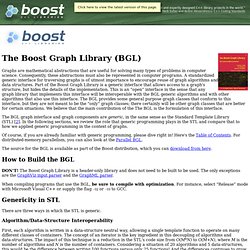

C/C++ Articles. C++ Reference. This website uses cookies.

By continuing, you give permission to deploy cookies, as detailed in our privacy policy. ok Search: Reference Not logged in Reference Standard C++ Library reference C Library The elements of the C language library are also included as a subset of the C++ Standard library. <cassert> (assert.h) C Diagnostics Library (header) <cctype> (ctype.h) Character handling functions (header) <cerrno> (errno.h) C Errors (header) <cfenv> (fenv.h) Floating-point environment (header) <cfloat> (float.h) Characteristics of floating-point types (header) <cinttypes> (inttypes.h) C integer types (header) <ciso646> (iso646.h) ISO 646 Alternative operator spellings (header) <climits> (limits.h) Boost C++ Libraries. Math - Boost 1.35. Octonions, like quaternions, are a relative of complex numbers.

Octonions see some use in theoretical physics. In practical terms, an octonion is simply an octuple of real numbers (α,β,γ,δ,ε,ζ,η,θ), which we can write in the form o = α + βi + γj + δk + εe' + ζi' + ηj' + θk', where i, j and k are the same objects as for quaternions, and e', i', j' and k' are distinct objects which play essentially the same kind of role as i (or j or k). Addition and a multiplication is defined on the set of octonions, which generalize their quaternionic counterparts. The main novelty this time is that the multiplication is not only not commutative, is now not even associative (i.e. there are quaternions x, y and z such that x(yz) ≠ (xy)z). A way of remembering things is by using the following multiplication table: Octonions (and their kin) are described in far more details in this other document (with errata and addenda).
The Boost Graph Library - Boost 1.48. Graphs are mathematical abstractions that are useful for solving many types of problems in computer science.

Consequently, these abstractions must also be represented in computer programs. A standardized generic interface for traversing graphs is of utmost importance to encourage reuse of graph algorithms and data structures. Part of the Boost Graph Library is a generic interface that allows access to a graph's structure, but hides the details of the implementation. This is an “open” interface in the sense that any graph library that implements this interface will be interoperable with the BGL generic algorithms and with other algorithms that also use this interface. The BGL provides some general purpose graph classes that conform to this interface, but they are not meant to be the “only” graph classes; there certainly will be other graph classes that are better for certain situations.
Of course, if you are already familiar with generic programming, please dive right in! DON'T!